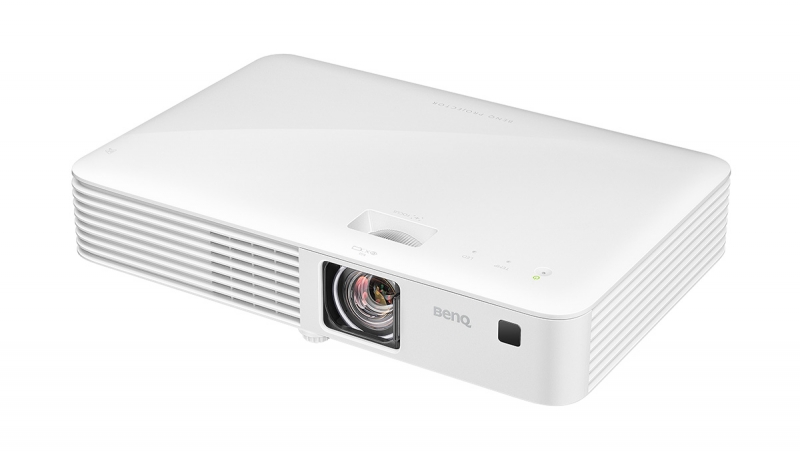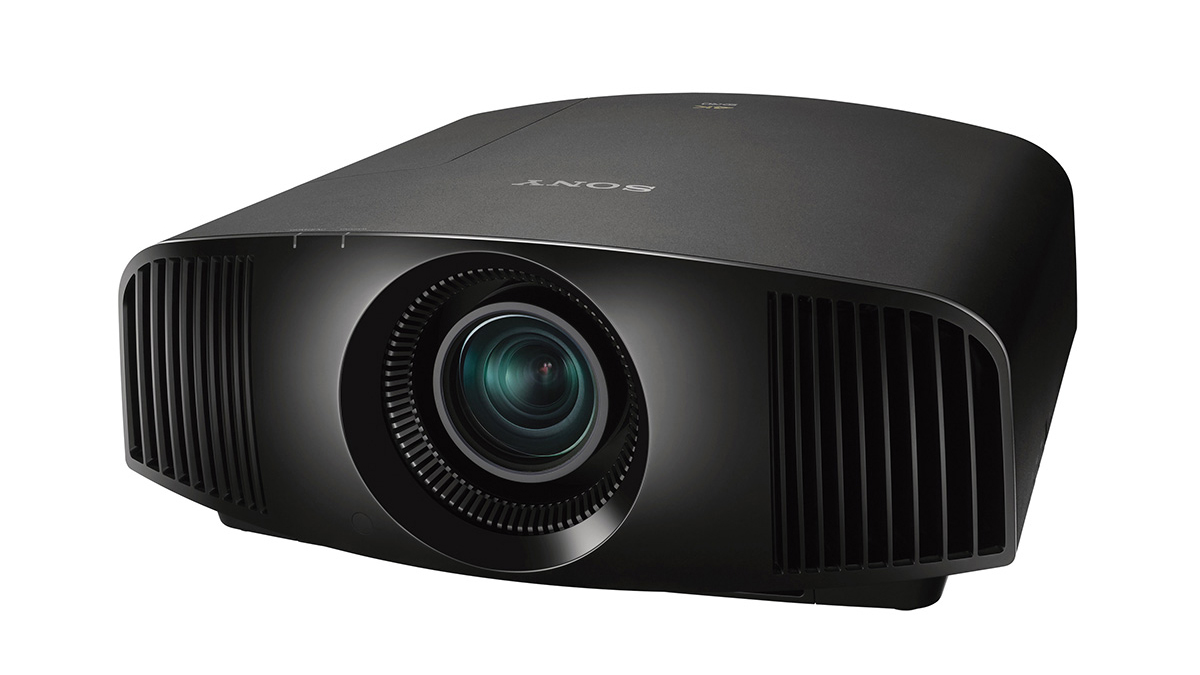How to choose the right projector for your needs
How professional photographers can choose the right projector for their needs
• January 2018 issue
When it comes to presenting images to your clients, bigger is better. But is a projector better than a large TV? Maybe you want a projector but you find the technical jargon overwhelming. Take a deep breath and relax. We’ll get your questions answered and discuss what features are important when it comes to selecting a projector.
Projector vs. TV
In most circumstances, a projector will be a better choice than a large TV for several reasons. A 60-inch TV has a screen size about 52 inches wide and 29 inches tall. Your landscape-oriented images will display full-screen, but your portrait-oriented images will be only 29 inches tall and take up less than half the screen. With a projector you can display images as large as your wall. You’ll have no problem showing images at even the largest size your clients want to order, even a 40x60-inch portrait.
Some TVs don’t allow for an optimum viewing experience unless you’re directly front and center. Anyone stationed to the side may get a less-than-stellar preview of the images. Projectors are much more forgiving in this matter.
A projector is easy to pack up and take to a client’s home or even a wedding reception venue. Big TVs are cumbersome to move, and you must protect the screen from getting scratched or broken.
Since projectors can show a bigger image than most LCD TVs on the market, it’s hard to compare pricing. But, to give you an idea, the typical retail price for an 88-inch LCD TV with a screen about 43 inches tall was $20,000 in 2017. Many projectors can project an image that size, and at a price ranging from $1,000 to $5,000.
There is one situation where a TV outshines a projector, quite literally: a brightly lit room. Ambient light can overpower and degrade a projected image. Consider whether you’ll have control over ambient light in the areas where you want to present images.

The BenQ Ch100 is a portable LED projector with full 1080p resolution, short-throw capability, and a durable lamp-free LED light source. $899
Jargon Decoder
Your next step is to get a handle on the technical jargon. Projector manufacturers mention terms including lumens, throw ratio resolution, contrast, LCD vs. DLP, lens shift, and keystoning. What do they mean?
Lumens is a measurement of brightness—how well a projected image will be visible on the screen. The higher the number, the brighter the projected image. The light from a projector adheres to the inverse-square law we learned in photography school, so the further a projector is from the screen, the more lumens you’ll need. The same goes for a larger projected image; to project a larger image, you’ll need a projector with more lumens. In general, more is better because if your projected image isn’t bright enough to overpower any ambient light spill, images
on screen may appear faded and washed out.
Throw ratio is the ratio of screen width and distance between projector and screen. In general, the further away a projector is from the screen, the larger the image will be. If you need a big image in a small room, you’ll want a projector with a short throw ratio.
As photographers, we’re geared to think that more resolution is better. And in small presentation rooms when your audience is close to the screen, resolution does become more significant. You don’t want clients to see each individual pixel. But on the flip side, you don’t want them agonizing over every pore and stray hair that you’ll retouch once they order. Most current projectors are XGA (1,024x768 screen pixels), which you’ll probably find adequate. There’s also WXGA (1,280x800 or 720p), which is good for high-definition video. WUXGA (widescreen ultra extended graphics array) is a 16:10 aspect ratio with a display resolution of 1,920x1,200 pixels. SVGA is on the way out, and some sales projection programs are incompatible with it, so stick with XGA, WXGA, or WUXGA.

The Powerlite 1795 F projector from Epson is extremely travel-friendly with full HD wireless widescreen projection and weighing only 4 pounds. $1,249.99
Contrast ratio is the difference between black and white points projected on the screen. A higher number means more vibrant colors and more detail in the shadows, but there’s a lot of ambiguity regarding this industry specification. The contrast ratio is based on the amount of light reflecting off the screen, so you can imagine there are many variables and inconsistencies between manufacturers. Contrast ratio doesn’t account for how the projector displays tones across the entire tonal range. To get a projector that can handle photographs, look instead for features such as color control settings.
The different projector types can be confusing. LCD (liquid crystal display) is generally accepted as rendering the most accurate colors, while DLP (digital light processing) renders more vibrant colors and deeper blacks. One issue with DLP is that some people see rainbow effects in video projected with a single-chip DLP projector (which isn’t a problem with three-chip DLP). Hardware failures are uncommon, but with no moving parts, an LCD is likely less prone to failure than DLP, which has a spinning color wheel.
Both lens shift and keystoning are ways of correcting an image when the projector is not aligned square to the screen. Keystoning is a digital adjustment to make the skewed projection appear square. Lens shift is the better way to fix extreme image distortion because it’s optical and doesn’t degrade the quality of images. Most, if not all, projectors have keystoning adjustments, but lens shift is a feature you’ll have to look for.
What's right for you
While a big TV may be the better choice in a room with high levels of ambient light, a projector provides more benefits in most situations. Projectors allow you to display larger images, they’re more portable, and cost less than a TV with a comparable screen size.
I can’t say which projector is the best for you, but for my business I use an LCD projector with WUXGA, 4,200 lumens, 15,000:1 contrast ratio, and 1.57-2.58 throw ratio. Just be mindful about the features and specs when selecting your projector so that you know it will work well in your space.
A gallery of projectors to choose from.
Betsy Finn is a photographer in Dexter, Michigan.
Tags: in-person sales projectors

